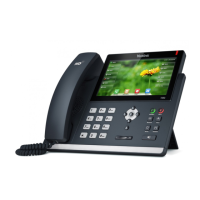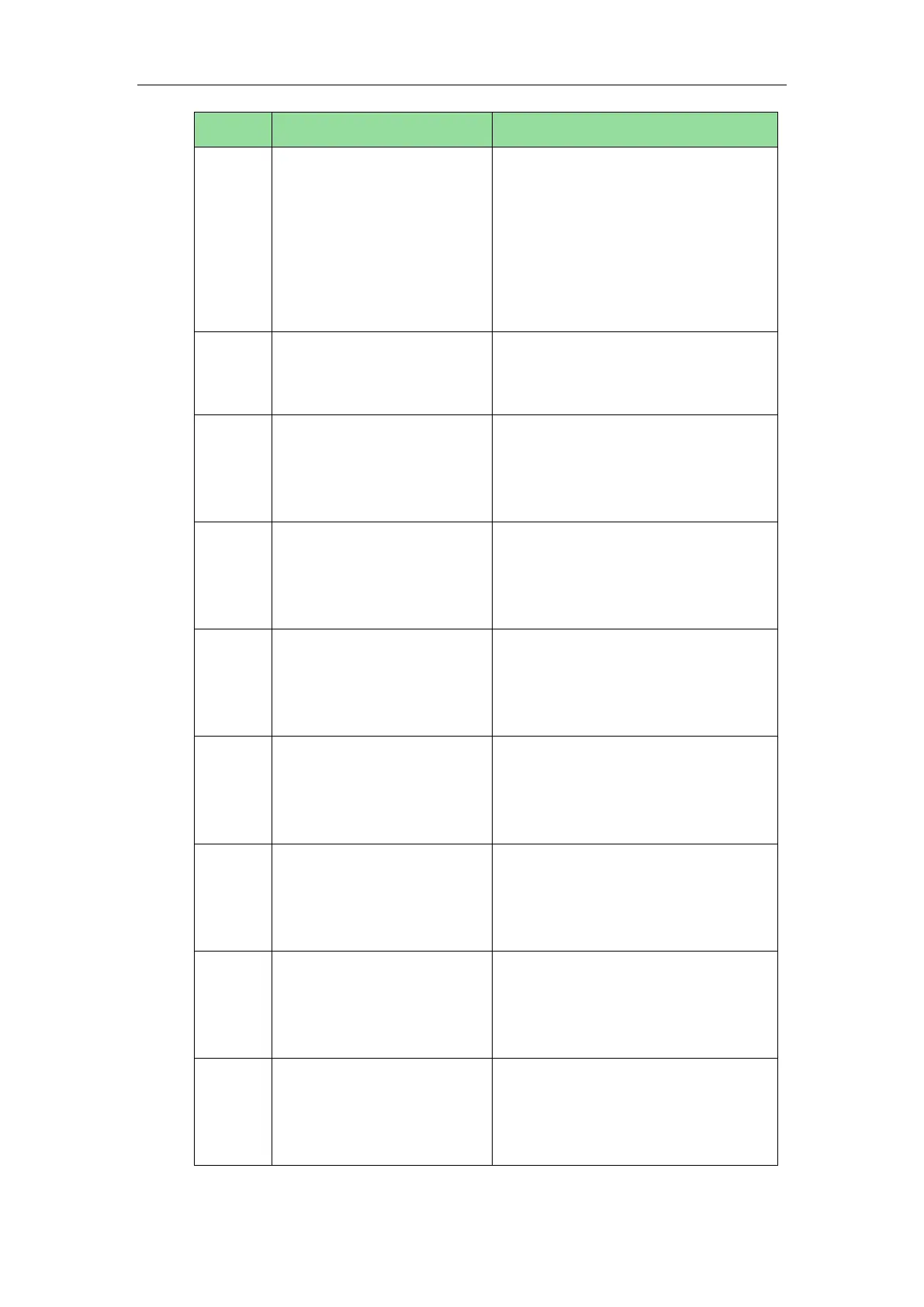Administrator’s Guide for SIP-T2 Series/T19(P) E2/T4 Series/CP860 IP Phones
840
single call leg is identified in the
CSeq field.
The media capability User A is
ready to receive is specified.
The port on which User B is
prepared to receive the RTP data is
specified.
INVITE—Proxy Server to User
B
The proxy server maps the SIP URI in the
To field to User B. The proxy server
sends the INVITE message to User B.
100 Trying—User B to Proxy
Server
User B sends a SIP 100 Trying response
to the proxy server. The 100 Trying
response indicates that the INVITE
request has been received by User B.
100 Trying—Proxy Server to
User A
The proxy server forwards the SIP 100
Trying to User A to indicate that the
INVITE request has been received by
User B.
180 Ringing—User B to Proxy
Server
User B sends a SIP 180 Ringing response
to the proxy server. The 180 Ringing
response indicates that the User B is
being alerted.
180 Ringing—Proxy Server to
User A
The proxy server forwards the 180
Ringing response to User A. User A
hears the ring-back tone indicating that
User B is being alerted.
200 OK— User B to Proxy
Server
User B sends a SIP 200 OK response to
the proxy server. The 200 OK response
notifies User A that the connection has
been made.
200OK—Proxy Server to User
A
The proxy server forwards the 200 OK
message to User A. The 200 OK
response notifies User A that the
connection has been made.
ACK—User A to Proxy Server
User A sends a SIP ACK to the proxy
server. The ACK confirms that User A
has received the 200 OK response. The
call session is now active.

